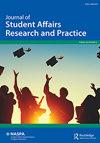A Review of Coral Reef Restoration Methods
IF 0.8
Q3 EDUCATION & EDUCATIONAL RESEARCH
Journal of Student Affairs Research and Practice
Pub Date : 2023-05-31
DOI:10.47611/jsrhs.v12i2.4394
引用次数: 0
Abstract
Due to global warming and human activity, the coral population has decreased by 50% since the 1950s. (Wetzel, 2021). Many policies have been placed on conserving the coral reefs, but more is needed to stop the rapid decline. All around the world, different researchers performed multiple types of restoration methods to try and reverse the damage and destruction the coral reef ecosystem has sustained. This paper reviews the other restoration methods researchers have tried and are currently trying to review their effectiveness in reversing the damage to coral reefs. Restoration methods can be divided into active and passive restoration methods. The methods reviewed are removing invasive algae, coral gardening, substrate manipulation, and stabilization, larval propagation, direct transplantation, substratum enhancement with electricity, and cryopreservation. All in all, all of these methods have their respective strengths and weaknesses. The method that can move forward to be more mass-produced would be direct transplantation, as additions such as nurseries are unnecessary. The restoration method that has shown the most promise has been substratum enhancement with electricity, but since the method is still relatively new, further research is needed. A possible recommendation for future coral reef restoration endeavors is to combine restoration methods to make up for the flaws of each method and incorporate long-term monitoring.珊瑚礁恢复方法综述
由于全球变暖和人类活动,自20世纪50年代以来,珊瑚数量减少了50%。(吉姆,2021)。许多保护珊瑚礁的政策已经出台,但还需要更多的政策来阻止这种迅速的衰退。在世界各地,不同的研究人员进行了多种类型的恢复方法,试图扭转珊瑚礁生态系统所遭受的破坏和破坏。本文回顾了研究人员尝试过的其他恢复方法,以及目前正在尝试评估它们在扭转珊瑚礁损害方面的有效性。恢复方法可分为主动恢复和被动恢复。综述了去除入侵藻类、珊瑚园艺、基质操作和稳定、幼虫繁殖、直接移植、基质电强化和低温保存等方法。总而言之,所有这些方法都有各自的优点和缺点。可以进一步大规模生产的方法将是直接移植,因为不需要增加苗圃等设施。目前最有希望的修复方法是电增强基质,但由于该方法相对较新,需要进一步研究。对于未来的珊瑚礁恢复工作,一个可能的建议是将恢复方法结合起来,以弥补每种方法的缺陷,并结合长期监测。
本文章由计算机程序翻译,如有差异,请以英文原文为准。
求助全文
约1分钟内获得全文
求助全文
来源期刊

Journal of Student Affairs Research and Practice
EDUCATION & EDUCATIONAL RESEARCH-
CiteScore
2.40
自引率
9.10%
发文量
50
期刊介绍:
The vision of the Journal of Student Affairs Research and Practice (JSARP) is to publish the most rigorous, relevant, and well-respected research and practice making a difference in student affairs practice. JSARP especially encourages manuscripts that are unconventional in nature and that engage in methodological and epistemological extensions that transcend the boundaries of traditional research inquiries.
 求助内容:
求助内容: 应助结果提醒方式:
应助结果提醒方式:


